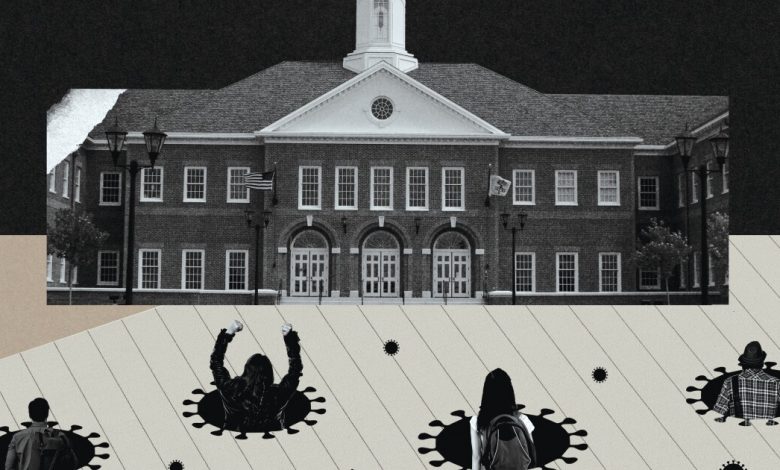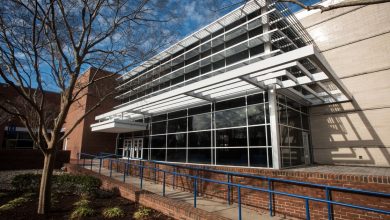Colleges Are Trying to Re-Enroll Adult Learners Who Dropped Out. Here’s How It’s Going.

[ad_1]
As colleges across the country try to turn around sagging enrollment rates, many are targeting one group in particular: the 36 million adults who left college without a degree.
Undergraduate enrollment has decreased by about 8 percent during the pandemic, according to the National Student Clearinghouse Research Center. That has made it even more urgent to bring those students back.
Higher-education leaders, politicians, and education nonprofits alike are trying to find the best ways to do so. But how can they make sure students are better prepared to face barriers this time around?
The majority of them are adult learners — students over the age of 25 — and have different needs than traditional college students. It can be hard for colleges to locate them. They might be struggling with finances and demands at home, like child care. Some might not feel like they belong in college at all.
One of the groups trying to help fix that is InsideTrack, a nonprofit student-coaching organization that works with colleges.
Throughout 2021, the nonprofit and its 25 partner colleges and universities contacted 27,000 students who dropped out, ultimately re-enrolling 3,000 of them for 2021’s summer and fall semesters — with nearly three-quarters of that group coming from underserved or underrepresented backgrounds. College leaders said the results were promising.
Several states have begun or expanded similar re-enrollment efforts, also largely targeting adult learners. While the efforts are in the early stages, one overarching theme is that these students often need support throughout their time in college — not just financial aid and help getting re-enrolled.
“Most states, if not all, have some type of college-attainment goals and I’m not sure that anybody’s on track for that,” said Steve Ast, senior vice president for partner success at InsideTrack. “Every state is really asking itself, ‘What do we need to do to drive more degrees or some type of certificate?’ A natural place to start is with those who are already somewhere along that path.”
But outreach alone is not enough, Ast said. “The idea of support is needed throughout the students’ journey, not just to get them back in that door,” he said.
Wraparound Services
Finding adult learners, re-enrolling them, and retaining them takes time. Many institutions don’t have the bandwidth to do it on their own, which is one of the big gaps InsideTrack is hoping to help fill, said Angela Jaramillo, its strategic partnership director.
Of the 25 colleges that worked with InsideTrack last year, eight were Historically Black Colleges and Universities and eight were community colleges, which tend to serve large populations of low-income, first-generation students.
The organization’s coaches, often aided by campus staff members, scoured databases to track down the names and contact information of former students, made phone calls, and sent texts and emails to see if they had any interest in returning and to determine what barriers stood in their way.
“We hear their stories, we acknowledge them,” Jaramillo said. “We want to understand what their barriers are now.”
Sometimes it was something as small as an unpaid fee, or a need to contact the institution to get the enrollment process moving again. In other cases, there were large financial barriers or family responsibilities that required additional support. Regardless, Jaramillo said, coaches could help the students navigate the enrollment process, define their goals, and guide them to campus resources like financial aid and child-care services that can aid long-term success.
While financial-aid and scholarship programs can be important tools to help the students, Ast said, coaching helps get them over the finish line.
“Coaching is almost like an insurance. You’re providing the coach to help make sure that that investment you’re making is going to be most effective and most impactful,” he said. “They’re going to get in, they’re going to stay in, they’re going to take the right courses to get onto the career path that’s appropriate for them.”
Different Needs
Many adult learners attend community colleges, the higher-ed sector hit hardest by pandemic-era enrollment declines.
InsideTrack has partnered with the John M. Belk Endowment, in North Carolina, on a pilot program helping five community colleges in North Carolina identify and support the state’s adult-learner population.
Adult students “have very different needs than a high schooler. They have full lives,” said MC Belk Pilon, president and board chair of the endowment. “They didn’t fall out because they couldn’t do the work. They fell out because the system wasn’t built for them, their lives were really full, and maybe they didn’t have the flexibility.”
One of the participating institutions is Pitt Community College, which has grappled with decreasing enrollment over the past two years. The college enrolled about 8,200 students in 2019. Of the 590 adult learners who’d dropped out over the past couple of years, 262 ended up enrolling for the fall after InsideTrack reached out to them.
When leaders realized they were treating adult learners the same as students straight out of high school , the college opened a center in 2021 aimed at meeting the needs of nontraditional students. Lawrence L. Rouse, the college’s president, said the center helps connect students with transportation, child care, clothing, mental-health services, and other programs including scholarships and additional funding. Adult learners can also fill out an intake form where they are able to list their needs and discuss their plans with a counselor.
“We’re learning every day from our experiences with the adult-learning initiative that we can’t treat everybody the same,” Rouse said. “It deals with equity, and we really need to give them what they need at the time. That’s not an easy thing to do, but we’re working hard on trying to find some of the answers.”
Re-enrolling adult learners who dropped out is directly tied to bolstering equity, said Mamie Voight, president and chief executive of the Institute for Higher Education Policy. Because students of color and low-income students were disproportionately affected by the pandemic, they were more likely to drop out or forgo college completely over the past two years, Voight said.
The institute is currently working with some 200 colleges and universities to examine students’ transcripts and help identify those who left college before earning enough credits. That initiative, called Degrees When Due, was created to increase degree attainment — improving equity in the process.
“A lot of what is behind that is deep inequities within society, deep inequities within our higher-education system, and additional challenges that many of these students face in completing their credentials,” she said. “Focusing on re-engagement in this way is a way to address some of the inequities that we see within higher education.”
Hopeful Officials
Some states have expanded statewide scholarship and financial-assistance programs for adult learners, such as Colorado’s Finish What You Started program and the Texas Reskilling Support Fund Grant Program.
The American Institutes for Research identified 67 “promise” programs during the 2020-21 academic year that offer tuition assistance to adult learners, though many carry additional requirements — such as requiring full-time attendance or allowing only first-time college students.
A Texas program initially had stringent requirements, awarding aid only to adult learners who had left college more than six months ago and who were enrolled in “high-demand” programs. Even as the state has loosened those parameters, colleges have struggled to find enough students who qualify, according to The Texas Tribune.
In Colorado, about 650,000 students have some college education but no degree. Thirty-one colleges are participating in a state program that provides adult learners with financial assistance and support services like career planning, financial literacy, and information about community resources. Originally rolled out as a pilot program in Adams County, it was expanded in 2021 with the help of federal Covid relief funding delivered by the state legislature.
The state’s goal is for 66 percent of residents to have a college diploma. It’s too soon to know how well the program is faring, but Colorado officials are hopeful.
“It’s really the support services that the student needs, and so when we were moving forward with these programs we wanted to ensure we had both,” said Cynthia N. Armendariz, senior director of the Colorado Opportunity Scholarship Initiative. “Every institution must provide financial support and wraparound support.”
“Using funds in this way is a great opportunity to help revive the economy and to strengthen the economy,” said Cynthia N. Armendariz, senior director of the Colorado Opportunity Scholarship Initiative. “It’s an investment in our population and our students to gain the skills they need for economic mobility.”
[ad_2]
Source link






